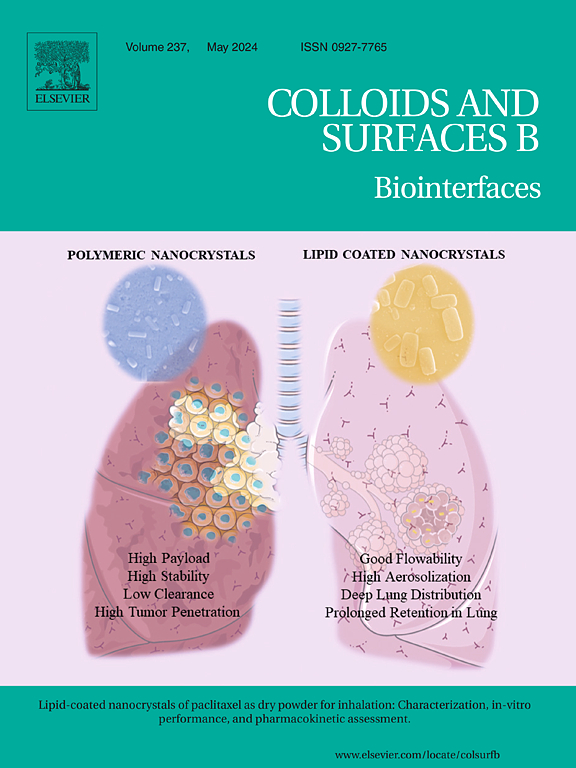Impact of different chemical debridement agents on early cellular responses to titanium dental implants: A transcriptome-based in vitro study on peri-implant tissue regeneration
IF 5.4
2区 医学
Q1 BIOPHYSICS
引用次数: 0
Abstract
Background
Poor peri-implant health leads to biofilm accumulation, peri-implantitis, and bone loss. Chemical debridement may help maintain peri-implant health, but its effects on peri-implant cells remain unclear.
Methods
Five cleaning agents—hydrogen peroxide (H2O2), Poloxamer, H2O2 +Poloxamer, Perisolv, and Paroex—were applied on titanium (Ti) surfaces. Mouse pre-osteoblasts (MC3T3-E1), human gingival fibroblasts (HGF), and human bone marrow stromal cells (hBMSC) were cultured on agent-treated Ti surfaces for up to 120 minutes to assess morphology, cytotoxicity, adhesion, and proliferation. RNA sequencing was performed on hBMSC.
Results
Except for Poloxamer, all treatments inhibited cellular spreading. Paroex increased cytotoxicity and inhibited proliferation. Perisolv impaired hBMSC adhesion and variably affected proliferation. H2O2, alone or with Poloxamer, elevated cytotoxicity and inhibited adhesion in hBMSCs but not MC3T3-E1 or HGF. In contrast, Poloxamer-treated Ti surfaces enhanced adhesion and proliferation across all cell types. RNA sequencing revealed that oxidant-based treatments (H2O2, H2O2 +Poloxamer, Perisolv) suppressed key genes for proliferation (HMGA2, JAG1, NOTCH1, YAP1, TBX3), anti-apoptosis (MCL1, BCL2L2), and adhesion (ITGA2, ITGB3, SPP1), while inhibiting MAPK, PI3K-Akt, and pluripotency pathways.
Conclusion
Commercial agents like Perisolv and Paroex impair hBMSC function, with Paroex demonstrating significant cytotoxicity. H2O2 exhibits toxicity, particularly to hBMSCs. Poloxamer improves cell attachment and growth. Given these findings, careful selection of debridement agents is critical to balance cleaning efficacy and cytocompatibility. The adverse effects on hBMSCs necessitate prompt removal postapplication. Further research on biomaterials supporting tissue regeneration postdebridement is needed to restore peri-implant health.
求助全文
约1分钟内获得全文
求助全文
来源期刊

Colloids and Surfaces B: Biointerfaces
生物-材料科学:生物材料
CiteScore
11.10
自引率
3.40%
发文量
730
审稿时长
42 days
期刊介绍:
Colloids and Surfaces B: Biointerfaces is an international journal devoted to fundamental and applied research on colloid and interfacial phenomena in relation to systems of biological origin, having particular relevance to the medical, pharmaceutical, biotechnological, food and cosmetic fields.
Submissions that: (1) deal solely with biological phenomena and do not describe the physico-chemical or colloid-chemical background and/or mechanism of the phenomena, and (2) deal solely with colloid/interfacial phenomena and do not have appropriate biological content or relevance, are outside the scope of the journal and will not be considered for publication.
The journal publishes regular research papers, reviews, short communications and invited perspective articles, called BioInterface Perspectives. The BioInterface Perspective provide researchers the opportunity to review their own work, as well as provide insight into the work of others that inspired and influenced the author. Regular articles should have a maximum total length of 6,000 words. In addition, a (combined) maximum of 8 normal-sized figures and/or tables is allowed (so for instance 3 tables and 5 figures). For multiple-panel figures each set of two panels equates to one figure. Short communications should not exceed half of the above. It is required to give on the article cover page a short statistical summary of the article listing the total number of words and tables/figures.
 求助内容:
求助内容: 应助结果提醒方式:
应助结果提醒方式:


